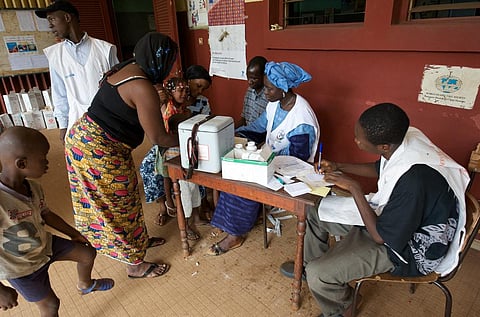

Over 2000 large dams have been built in sub-Saharan Africa (SSA) and more than 200 are either under construction or planned for increasing hydropower generation, irrigating crops and promoting economic growth. But according to a new study published in Malaria Journal, dams are responsible for frequently intensifying malaria transmission in SSA. It is a first such study that examines future malaria transmission around dams in light of climate change.
About 3.1 million people are at risk of malaria due to dams in SSA, with 1.1 million cases associated with 1268 large dams in the region reported each year. For existing dams and associated reservoirs, the number of people at risk is likely to increase from 15 million in 2010 to 21–23 million in the 2020s and 25–26 million in the 2050s.
The study has observed a rise in cases of malaria after the construction of these dams.
Role of climate change on malaria around dams
According to Solomon Kibret of the University of California, the lead author of the study, areas where the disease is not currently present can turn into transmission zones due to climate change. Increase in temperature and changing rainfall patterns in SSA are likely to result in widespread increase in malaria transmission. While rainfall determines the availability of breeding habitat for mosquito vectors, temperature determines the time taken for development of larval mosquitoes, their lifespan and the rate of blood feeding of adult vectors.
Simultaneously, number of dams located in malarious areas will increase and so will the population, hence, increasing the risk of transmission. Moreover, total area suitable for stable malaria transmission is expected to increase from 7 million sq km in 2010 to 9–11 million sq km in the 2080s. Therefore, predicting the impacts of such changes accurately is important for effective disease control.
Why is Africa vulnerable?
There are two broad reasons. The future impact of dams in SSA may look alarming because of lower immunity among people who did not have to deal with the disease before. Secondly, Africa is experiencing a surge in dam construction. The mosquitoes that transmit Malaria breed in stagnant water like puddles formed along dam shorelines.
Countries that should be more concerned over emerging malaria around dams are South Africa, Zimbabwe and highland areas in Ethiopia and Kenya since people in these areas often lack any immunity to the disease. Malaria kills around 400,000 people a year, with majority of them being children in sub-Saharan Africa. World Health Organization (WHO) data show there are around 200 million malaria cases a year globally.
According to the study, the dams should be designed and managed to minimise breeding of mosquitoes, such as drying out shoreline areas. Introducing fish that eat mosquito larva in reservoirs is another recommendation of the study.